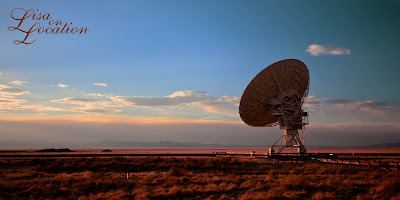Profound isolation is the most immediate sensation you experience when visiting the National Radio Astronomy Observatory's Very Large Array. That's a far cry from what you might expect. The famous observatory has been featured in countless movies and documentaries for good reason--it's 27 antennas boast dishes 25 meters across, towering over the desert floor and dwarfing any human standing beneath one. Specially-designed rail cars move them along nearly 23 miles of railroad tracks laid out in a Y formation for precise observations of the heavens above. The antennas, operating in parallel, function as one enormous radio telescope. And that's the crux of it--even an 82-foot-wide dish, massive though it may be, appears tiny on the horizon when it's seven miles away. Approaching the VLA along U.S. 60, the remoteness of the site sinks in. The San Agustin Basin is flat and featureless, desert scrub as far as the eye can see, ringed by low, distant mountains. There are no people--saying the area is "sparsely populated" is being generous. The VLA is first noticed as a speck in the distance, distinct from the mountains, rising from the desert floor. As you approach, more become visible, spaced at regular intervals. Eventually, they resolve into great dish antennas, and you suck in your breath when you realize you are still miles away.
No other humans are visible when you drive up to the simple, unstaffed visitor center. Maps are available to purchase on the honor system. This is not, it becomes clear, a high traffic tourist trap. It is a working research center. The silence is almost tangible. Walking along the self-guided tour, the wind is steady. A tumbleweed rolls past, only to hang up against a fence. There are trees around the buildings, the only trees in the entire basin. Jackrabbits scamper away, startled by the sudden interruption of their privacy. They don't scamper very far, though. A lone pronghorn antelope grazes on the desert grasses that grow in clumps here and there. Suddenly--and so quietly you almost miss it--the antennas move. It's not a quick, jerky move, nor is it a ponderous, turtle-slow move. It's steady, deliberate. They rotate and lift smoothly, refocusing their collective gazes with a soft hum. For something that massive and metallic, a deep rumble, or at least a rhythmic banging would seem more appropriate. But no, the movement is accompanied by a soft hum. Wait a while, and they do it again. Finishing with one observation a hundred million light years distant, they pivot, lift, and find another piece of the sky worthy of their keen gaze.
As the sun dips below the horizon and the good light fades, you bid farewell to the array, the jackrabbits and even the pronghorn. You have not seen another person. The experience is humbling, hypnotic. This is what the world will be like long after humans are no more. Our creations will carry on our work, our studies, our explorations. They will not complain, or argue, or shirk. They will study and learn, because that is what they have been built to do. To these tools and servants of ours, at least, we have bequeathed the best parts of ourselves. And that, in itself, is satisfying.
Lisa On Location Photography




No comments:
Post a Comment